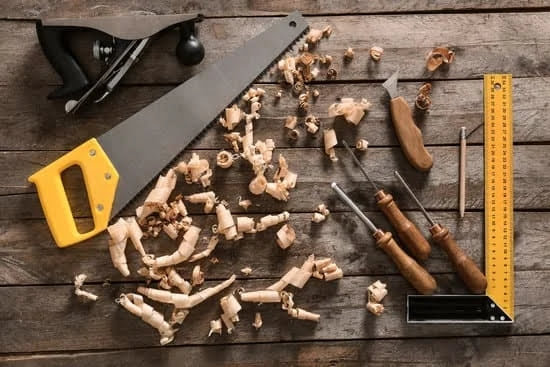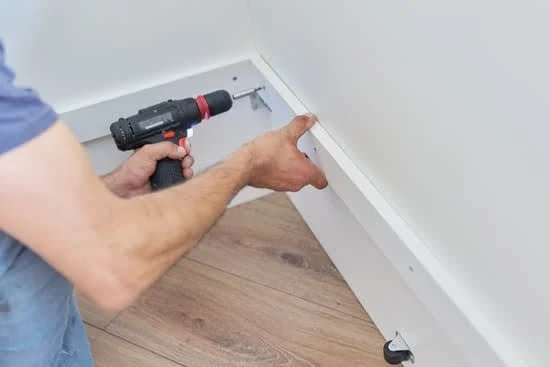What are the types of joints in woodworking? Woodworking joints are essential for joining pieces of wood together to create strong and sturdy structures. There are various types of woodworking joints, each with its own unique characteristics and uses.
In this article, we will explore the basic types of woodworking joints, including butt joints, lap joints, dovetail joints, mortise and tenon joints, tongue and groove joints, and edge joints. Whether you are a beginner or an experienced woodworker, understanding these different types of joints can help you choose the right one for your project and ensure its success.
Woodworking joints are crucial for creating durable and visually appealing woodwork projects. By understanding the different types of woodworking joints, you can expand your skills and create intricate joinery that adds both strength and aesthetics to your work.
In the following sections, we will delve into each type of joint, discussing its unique features, applications, and techniques for creating them. Whether you are building furniture, cabinets, or other wooden structures, knowing which joint to use can make all the difference in the quality of your craft.
From simple butt joints to more complex dovetail and mortise and tenon joints, there is a wide range of options available to woodworkers. Each type offers distinct advantages in terms of strength, appearance, ease of construction, and suitability for specific projects.
As we explore these various types of woodworking joints in detail, you will gain valuable insights into their strengths and weaknesses. This knowledge will empower you to select the most suitable joint for any given woodworking task based on factors such as load bearing requirements or design preferences.
Basic Types of Woodworking Joints
Woodworking joints are essential for creating strong and durable woodwork pieces. There are several types of woodworking joints that serve different purposes and offer varying levels of strength and aesthetics. Understanding the different types of woodworking joints is crucial for any woodworker, as it allows them to choose the most appropriate joint for each project based on structural requirements and visual appeal.
One of the most basic types of woodworking joints is the butt joint. This simple joint involves joining two pieces of wood by simply butting them together. While it is easy to create, butt joints are not the strongest and may require additional support or reinforcement.
Another common type of woodworking joint is the lap joint, where one piece of wood overlaps another. This type of joint provides added strength compared to a simple butt joint and is often used in projects that require extra support.
Dovetail joints are known for their strength and decorative appeal. These interlocking joints are commonly used in cabinet making and box construction due to their ability to resist pulling forces.
| Type of Joint | Strength | Aesthetic Appeal |
|---|---|---|
| Butt Joint | Low | Basic |
| Lap Joint | Medium | Simple |
| Dovetail Joint | High | Decorative |
Understanding the strengths and weaknesses of each type of woodworking joint allows woodworkers to make informed decisions when choosing the right joint for their projects. By considering factors such as strength, durability, and visual appeal, woodworkers can ensure that their creations are not only structurally sound but also visually pleasing.
Butt Joints
There are several variations of butt joints, including mitered butt joints and rabbetted butt joints. Mitered butt joints are created by cutting the ends of the wood at a 45-degree angle before joining them together.
This creates a more visually appealing joint but does not add any additional strength. Rabbetted butt joints involve cutting a groove at the end of one piece of wood to fit the edge of another piece, creating a stronger joint than a standard butt joint.
When using butt joints in woodworking, it’s important to consider the type of wood being used and the overall function of the project. Selecting high-quality wood with straight grain can help improve the strength and durability of the joint. Additionally, using dowels or biscuits along with adhesive can reinforce the joint for added stability.
In summary, while butt joints may be the simplest form of woodworking joint, they have their limitations in terms of strength and durability. However, with proper reinforcement and careful selection of materials, they can still be suitable for certain projects. Whether you’re a beginner or an experienced woodworker, understanding the different types of woodworking joints will allow you to choose the right one for your specific project needs.
Lap Joints
When it comes to woodworking, lap joints are a popular choice for joining two pieces of wood together. This type of joint involves one piece of wood overlapping another, creating a strong and reliable connection. Lap joints are commonly used in furniture making, cabinetry, and even in the construction of wooden frames.
There are several variations of lap joints, including the full lap joint, half lap joint, and cross lap joint. Each variation offers its own unique benefits and is suitable for different types of woodworking projects. For example, the full lap joint provides maximum strength and stability and is often used in load-bearing structures, while the half lap joint is more commonly seen in decorative woodworking projects.
One of the key advantages of lap joints is their versatility and ease of construction. With the right tools and techniques, woodworkers can create clean and precise lap joints that add both strength and visual appeal to their projects. Whether you’re constructing a simple picture frame or a complex piece of furniture, mastering the art of creating lap joints can greatly enhance the quality and durability of your woodworking creations.
| Lap Joint Variation | Best Used For |
|---|---|
| Full Lap Joint | Load-bearing structures |
| Half Lap Joint | Decorative woodworking projects |
| Cross Lap Joint | Creating strong connections at right angles |
Dovetail Joints
How Dovetail Joints Work
Dovetail joints consist of a series of pins and tails that interlock with one another. The pins and tails have trapezoidal shapes, with the pins narrowing towards the end, while the tails widen at the top. When fitted together, the joint resists pulling apart and adds strength to the overall structure.
Applications of Dovetail Joints
Dovetail joints are commonly used in drawer construction due to their ability to withstand constant pulling forces. They are also found in the construction of high-end cabinets, where both strength and aesthetic appeal are important. Additionally, dovetail joints can be useful in creating decorative boxes or frames where visible joinery is desired.
Tips for Creating Dovetail Joints
When creating dovetail joints, precision is crucial. Cutting both the pins and tails accurately is essential for a tight fit. This typically requires the use of specialized cutting tools such as a dovetail saw and chisels. Additionally, careful layout and marking of the joint is necessary to ensure proper alignment during assembly. Finally, practice and patience are key when mastering this intricate woodworking joint.
Mortise and Tenon Joints
Traditional Mortise and Tenon Joints
In traditional mortise and tenon joints, the mortise is usually rectangular or square in shape, while the tenon is typically rectangular with shoulders that ensure a snug fit within the mortise. The ideal thickness of the tenon is generally one-third of the width of the rail or stile to create a strong joint that can withstand pressure and tension.
Variations of Mortise and Tenon Joints
There are several variations of mortise and tenon joints depending on the specific woodworking project. For instance, haunched tenons have an additional shoulder at one end to provide extra support. Through mortises extend all the way through both pieces of wood for added strength.
Loose tenons involve using separate pieces for the tenon instead of cutting it directly from one piece. These variations allow for flexibility in creating different styles while maintaining the durability and stability associated with this type of joint.
Uses in Woodworking Projects
Mortise and tenon joints are commonly used in constructing tables, chairs, doors, windows, and frames where strength and longevity are essential. Due to its strength and reliability, this joint is popular among skilled woodworkers looking to create high-quality furniture pieces that stand the test of time.
Overall, understanding different types of woodworking joints such as mortise and tenon joints is crucial for any woodworking enthusiast or professional looking to enhance their craftsmanship and create durable pieces that showcase precision and skill.
Tongue and Groove Joints
One of the key advantages of tongue and groove joints is the ability to create a uniform, flat surface without any visible gaps or spaces. This is especially important for flooring, where an uneven surface can cause tripping hazards and lead to premature wear and tear. Additionally, the interlocking design of tongue and groove joints provides added strength and stability to the overall structure.
When creating tongue and groove joints, it’s important to ensure precise measurements and cuts to achieve a snug fit. Using specialized router bits or table saw blades designed for tongue and groove joinery can help achieve clean and accurate cuts. Additionally, applying wood glue along the joint before assembly can further enhance the strength of the connection. Overall, tongue and groove joints offer an effective solution for creating seamless connections in woodworking projects.
- Provides a tight fit for flooring and paneling
- Creates a seamless, gap-free surface
- Enhances strength and stability in large surface areas
Edge Joints
When it comes to edge joints, the most common method involves gluing the edges of two boards together. This creates a larger, solid piece of wood that can be used for tabletops, shelving, or other large surfaces. However, it’s important to ensure that the edges are perfectly straight and smooth to achieve a seamless joint. Additionally, using dowels or biscuits can add extra strength and stability to the joint.
Another method for creating edge joints is using a tongue and groove joint. This involves cutting a slot (the groove) into one piece of wood and a corresponding ridge (the tongue) on the other piece. When these interlock, they create a strong connection that prevents the boards from shifting or separating over time. This type of joint is often used for flooring or paneling where stability is crucial.
Additionally, for more decorative edge joints, woodworking enthusiasts may turn to methods like rabbet joints or dado joints. These styles allow for more intricate designs as well as added strength and support for larger projects such as shelving units or cabinets. When choosing an edge joint method for your woodworking project, it’s important to consider not only the function but also the visual appeal you want to achieve with your finished piece.
Conclusion and Tips for Choosing the Right Joint for Your Project
In conclusion, understanding the different types of joints in woodworking is essential for any woodworker, whether you are a beginner or an experienced craftsman. Each type of joint serves a specific purpose and offers its own unique advantages. From the simple butt joint to the more complex dovetail joint, there is a wide range of options to choose from when deciding which joint is best for your project.
When choosing the right joint for your woodworking project, it is important to consider factors such as strength, appearance, and functionality. For example, if you are building a piece of furniture that requires strong support, a mortise and tenon joint may be the best choice. On the other hand, if you are looking for a decorative and intricate joint for a jewelry box or cabinet, a dovetail joint would be more fitting.
Additionally, it is crucial to consider the type of wood you are working with and how it will react to different types of joints. Some woods may be more prone to splitting or warping when certain joints are used, so it’s important to understand how each joint will interact with your chosen wood.
By taking these factors into consideration and carefully weighing the pros and cons of each type of joint, you can ensure that your woodworking project will not only be structurally sound but also visually appealing. Remember that practice makes perfect when it comes to mastering these woodworking joints, so don’t be afraid to experiment with different types until you find the perfect fit for your next project.
Frequently Asked Questions
What Are the Different Types of Joints Used in Woodworking?
In woodworking, there are several types of joints commonly used to connect pieces of wood. These include butt joints, lap joints, rabbet joints, dado joints, miter joints, and dovetail joints. Each type of joint has its own strengths and weaknesses, making them suitable for different kinds of woodworking projects.
What Are the 3 Wood Joints?
The three basic wood joints are the butt joint, the lap joint, and the dovetail joint. Butt joints are the simplest form of joint where one end of a piece of wood is butted against another.
Lap joints overlap two pieces of wood while dovetail joints are known for their strength and durability due to the interlocking nature of their fingers.
What Are the Different Ways to Join Wood?
Wood can be joined together in various ways besides using traditional woodworking joinery techniques. These include using screws, nails, or glue to secure pieces together temporarily or permanently. Additionally, joinery methods such as pocket hole joinery and biscuit joinery offer alternative ways to create strong and sturdy connections between wooden pieces.

Hi everyone! I’m a woodworker and blogger, and this is my woodworking blog. In my blog, I share tips and tricks for woodworkers of all skill levels, as well as project ideas that you can try yourself.





